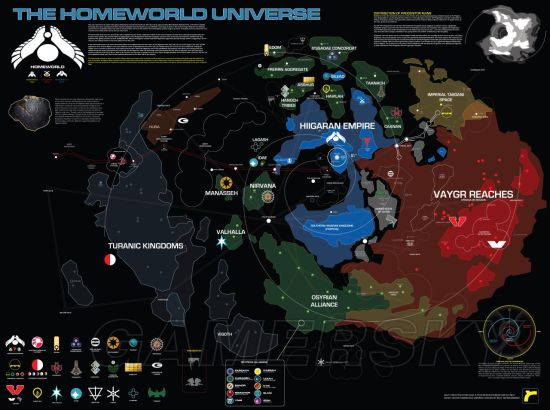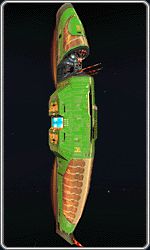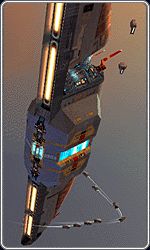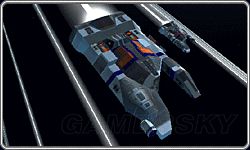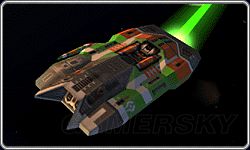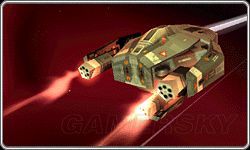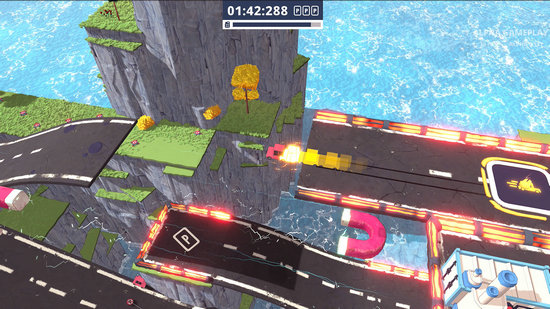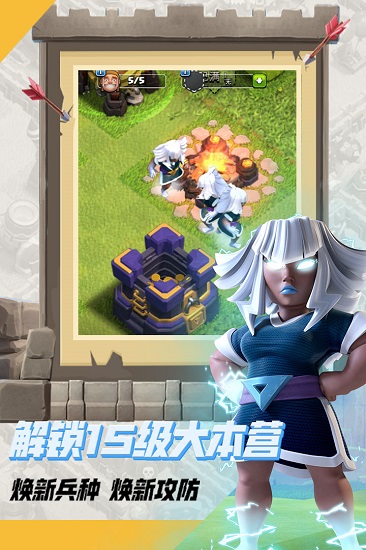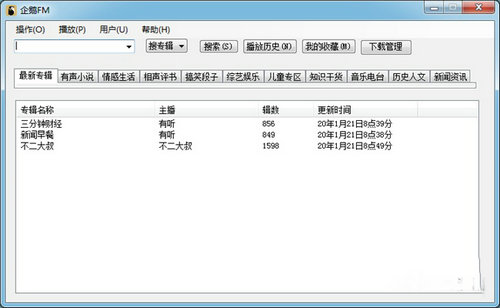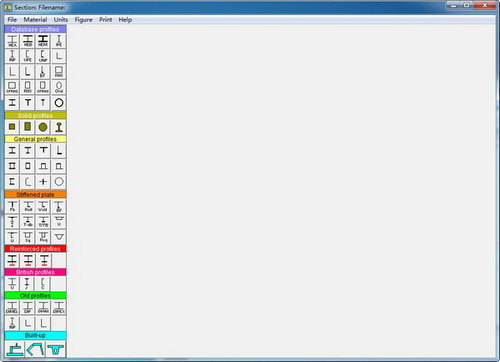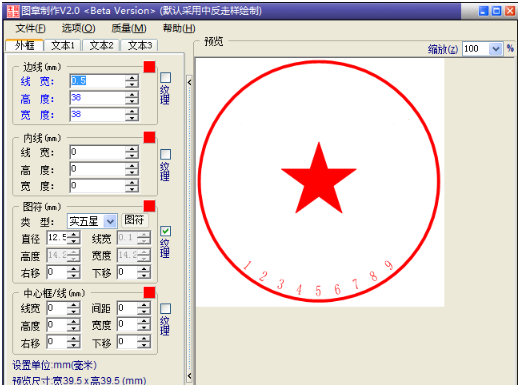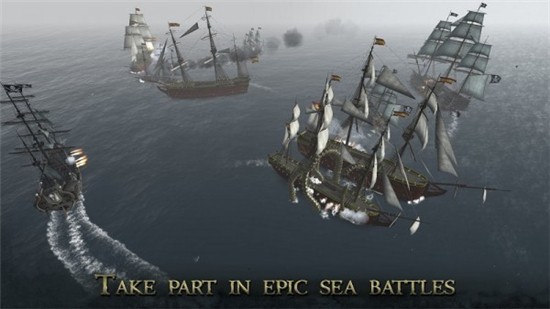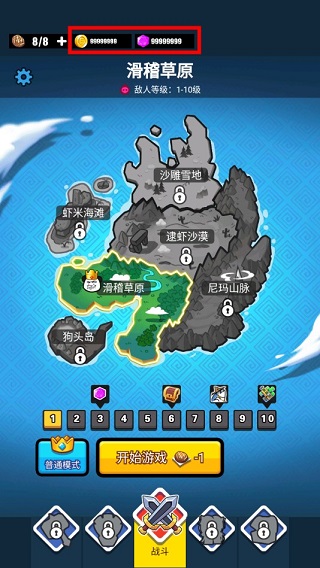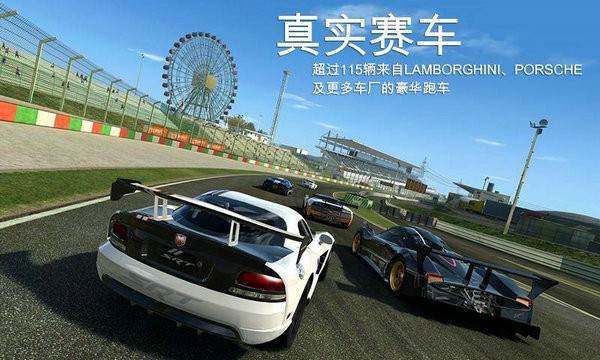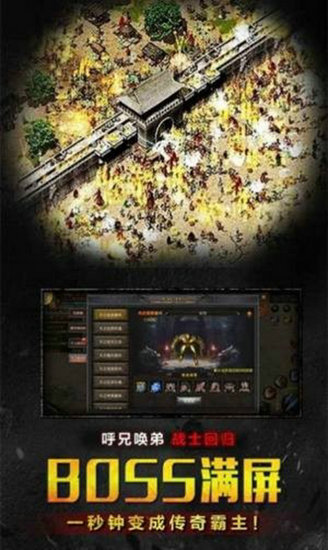《家园》及家园2主要单位资料翻译
家园系列有着庞大的世界观体系,游戏中还有众多单位出现,下面为大家带来bomcannon分享的《家园》及《家园2》主要单位资料翻译,一起来看看吧。
家园1
1代
库申母舰
级别:母舰
建造成本:8000RU
构建时间:300秒
可操作性
加速:10米/秒,2
最大速度:50米/秒
命中点:160000
维修率:5 / 7500的火力:600
覆盖范围:60%
质量:5000000吨
打捞#:—
码头点:5
特殊能力: 加油和维修
建立技术要求:
没有
武器:5小弹炮
伤害:30-40
射程:4500米
在1159第一黑暗时代,最终计划被接受的容器可以遵循的路径由Guidestone表示。这个项目推迟了这么久,根本就是没有人,天文学家和宗教领袖,都不能说是什么驱使我们去卡拉克,所以没有人能说什么是探险队会遇到什么。它终于决定要建立一个容器,能做的一切,包括建立新的殖民地深coreward。简单的称为母船,这船将部分载体,部分调查船,部分厂复杂,最重要的是,为我们的人民在低温冷冻睡眠的数以百万计的临时的家。它将必须能够处理的巨大未知的星系,以及任何发现或威胁,他们将包含。这将是我们历史上最伟大的建筑工程,是由一种令人不安的思想驱使着,无论我们在技术的高度,无论是什么给我们带来了太多的东西。从每一个氏族放弃了与世隔绝的部长,竞争政策和汇集他们的每一个资源开发战略和设计,然后分配到各个工业中心在整个北极区。与此同时,在技术和生产方面一直落后于尖端的部族,他们的努力完全转变为农业生产,喂养那些曾停止养活自己的部族。
在这样一个巨大的船只,致力于这么多的任务,它是必要的,以满足每个部分的船舶的任务,以满足每个部分。
母舰的设计上与原来的轨道设施创造了大型船舶在第一位置的移动施工场地。自动化制造的海湾是能够高速生产的船只从小型侦察员到更大的船只,但尚未设计。各种并行生产的轨道允许几十个较大的组件被投,同时组装,从而从根本上减少所需的时间,以建立更大的船只。船舶组件是基于模块化的技术,许多相同的被用于在不同的船体设计,从而节省时间,并允许更快的同时施工。铸造地板可以使用多个建设轨道,同时建立一支童子军,组建一个中队的护卫舰,并创造足够的条例为新船两套。大衣架提供对接袖子大量船只进行维修或同一套可以用作泊位应母舰需要庞大的舰队辅助船进入超空间。
没有大量的原材料带来的资源收集容器,这将是不可能的。围绕原切割船的模型,这是用来打破原材料为支架的初期建设和航空母舰,资源采集的设计是为了减少和舀各种空间材料,从固体小行星气体星云。采集然后返回母舰,将其持有的内容通过一个阶段的反汇编器阵列处理。虽然这是小的PDA和不少比用来供应支架轨道阵列更有效,它对阵列融合火炬相同的主要作品。这将减少任何材料组成它的元素,而磁流体分流场各种元素按原子量的蒸发,并把它们存储的贝壳。储存炮弹巨大的蜂窝,(存储空间几乎3立方公里)就在母舰的船体表面65%。这允许快速访问和通风,在一个果酱或储存细胞破裂的事件,以及提供一个最终的装甲层,以使船舶遭受灾难性的冲击或武器攻击。
因为有两种旅行方式。首先是基于传统的融合驱动技术,基本上是一个系列的大型聚变反应堆设计,以发泄高能量通过一个形状的磁性瓶的瓶子。他们提供了一个缓慢但稳定的1G加速度最大输出。机动喷气机是通过一系列的导管从主排气中输送等离子体,这允许一部分的主推力转移到机动的。
“母舰”的超光速的全面影响尚不完全清楚,但它是系统使得这次可能。往船下后部位于大保护区包含超空间模块。这是一座在沙子下找到了直接复制,但扩大12倍,以适应一艘母舰的质量。虽然已经过测试的效果,通过各种尺寸的测试模块,我们的控制和理解的影响是广泛测试的影响是有限的。这导致了大规模的能源需要,以诱导波阵面,禁止其使用任何船只太小,至少进行3个工业融合植物。
那里是我们的超空间有限的理解的另一个缺点。我们只能诱导一个线性隧道效应的大规模比例,相对粗糙的控制距离。该模块预计将有一个单一的波形事件有一个范围为2500光年,以触发驱动器,我们必须收取的所有能量为这样一个惊人的距离所需的模块。如果我们希望旅行更适当和谨慎的距离,我们必须地通过放电模块的能量停止波效应,降回到正常的时空。
舰队情报
从探头、观测设备、传感器等来分析接收数据,这是舰队情报工作的任务。为中心的正下方的主要桥梁是一个大型球形容器的工作/ COM站、数据分流中心全全息投影坑周围。当母舰正在进行中,这个坑将永久由轮班的队伍由最优秀的科学家、外交官载人,语言学家和战术军官,专门选择不仅为自己的知识,但他们的适应性。舰队情报访问不仅母舰的传感器阵列,但舰队档案以及。无论“母舰”应该在深空的邂逅,舰队情报将解释数据并给出准确的分析在情况允许的情况下,提供初步的结论及策略建议。
Kushan Mothership
Homeworld Statistics
Class: Mothership
Build Cost: 8,000 RUs
Build Time: 300 s
Maneuverability: n/a
Acceleration: 10 m/s^2
Max Velocity: 50 m/s
Hit Points: 160,000
Repair Rate: 600/5 sFirepower: 7,500
Coverage: 60%
Mass: 5,000,000 tons
Salvage #: -
Dock Points: 5
Nav Lights: 14
Docking Lights: 4
Special Abilities:
Refuel and Repair Fighters
Build
Required Tech:
None
Weapons:Damage:Range:Fire Time:
5 Small Projectile Cannons30-404,500 m1.0 s
Info
In the first triad of 1159, a final plan was accepted for the vessel that would follow the path indicated by the Guidestone. What had delayed the project for so long was simply that no one, neither astronomers nor religious leaders, could say for certain what had driven us to Kharak, and so none could say what an expedition would encounter. It was finally decided to build a vessel that was capable of doing everything, including establishing a new colony deep coreward. Known simply as the Mothership, this vessel would be part carrier, part survey ship, part factory complex and, most importantly of all, the temporary home for millions of our people frozen in cryogenic sleep. It would have to be able to deal with the great unknown reaches of the galaxy, and whatever discoveries or threats they would contain. It would be the greatest construction project in our history, driven by the disturbing thought that whatever had brought us here had obviously been too much for us at the height of our technology. Ministers from every clan abandoned their cloistered, competitive policies and pooled their every resource to develop stratagems and designs, and then allocated them to the various industrial hubs throughout the polar zones. In the meantime, clans that had been trailing the cutting edge in technology and production turned their efforts completely over to agricultural work, feeding those clans who had ceased to feed themselves.
In such a huge vessel dedicated to so many tasks, it is necessary to devote entire areas towards fulfilling each part of the ship's mandate.
The Mothership is designed to be a mobile construction yard on par with the original orbital facilities which created the mega-vessel in the first place. The automated manufacturing bay is capable of high-speed production of vessels from tiny Scouts to larger ships that are yet to be designed. Various parallel production tracks allow for dozens of larger components to be cast and assembled at the same time, thus radically reducing the time needed to build larger vessels. Ships components are based on modular technologies, many of the same ones being used across various hull designs, thus saving time and allowing for faster simultaneous construction. The foundry floor is capable of using multiple construction tracks to simultaneously build a fleet of scouts, assemble a squadron of corvettes, and create enough ordinance for both sets of new ships. A large hanger provides docking sleeves for a huge array of vessels to be serviced - or the same sleeves can simply be used as berths should the Mothership need to enter hyperspace with a large fleet of auxiliary ships.
None of this would be possible without the immense quantity of raw materials brought in by the resource-gathering vessels. Built around the model of the original cutting ships, which were used to break down raw materials for the initial construction of the Scaffold and the Mothership, the resource-gatherers are designed to reduce and scoop up a variety of space material, ranging from solid planetoids to gas nebulae. The gatherers then return to the Mothership and transfer the contents of their holds for processing through a Phased Disassembler Array. While this PDA is smaller and quite a bit more efficient than the orbital array used to supply the Scaffold, it works on the identical principal of arrayed fusion torches. It will reduce any material to its component elements, while a Magneto-Hydrodynamic Shunt Field sorts the vaporized elements according to atomic weight and carries them to the storage shells. The massive honeycomb of storage shells, (almost 3 cubic kilometers of storage space) lies just under the surface of 65% of the Mothership's hull. This allows for quick access and venting, in the event of a jam or storage cell rupture, as well as providing a final layer of armor, in case the ship suffers from a catastrophic impact or weapon strike.
The Mothership has two modes of travel. The first is based on conventional fusion drive technology, and is basically a series of large fusion reactors designed to vent high-energy plasma through an opening in a shaped magnetic bottle. They provide a slow but steady 1G acceleration at maximum output. Maneuvering jets are fed plasma from the main exhaust through a series of conduits, and this allows a portion of the main thrust to be diverted to maneuvering.
The full implications of the Mothership's hyperdrive is not completely understood, but it is the system that makes this voyage possible. Toward the lower aft portion of the ship lies the large shielded area containing the Hyperspace Module. This is a direct copy of the one found under the sands of Khar-Toba, but expanded 12-fold to accommodate a vessel of the Mothership's mass. Even though the effect has been tested extensively through ships fitted with test modules of various sizes, our control and understanding of the effect is somewhat limited. This has resulted in a need for massive energy to induce the wavefront, prohibiting its use on any vessel too small to carry at least 3 industrial fusion plants.
There is another drawback to our limited understanding of hyperspace. We can only induce a linear tunnel effect of massive proportions, with relatively crude control of distance. The module is projected to have a range of 2500 light years for a single waveform event, and in order to trigger the drive we must charge the module with all the energy required for such a stunning distance. Should we wish to travel a more appropriate and cautious distance, we must crudely halt the wave effect by discharging the module's energy, and dropping back into normal space-time.
Fleet Intelligence
It is the job of Fleet Intelligence to analyze incoming data from probes, observation equipment and sensors. Centered just below the main bridge is a large spherical chamber containing work/com stations, with data shunts centered around a full holographic projection pit. When the Mothership is underway, this pit will be manned permanently by shift teams composed of the best scientists, diplomats, linguists and tactical officers, all specially selected not only for their knowledge, but their adaptability. Fleet Intelligence has access to not only the Mothership's sensor arrays, but to the Fleet Archives as well. Whatever the Mothership should encounter in deep space, Fleet Intelligence will interpret the data and give as accurate an analysis as the situation permits, offering tentative conclusions and tactical recommendations.
贵霜“箭头”侦察机
(PS:机翻里边库申=贵霜,贵霜帝国是历史上的一个强大国家)
类:战斗机
建造成本:35RU
构建时间:12秒
可操作性(机动性):非常高
加速:1000米/秒,2
最大速度:1000米/秒
命中点:110
燃料容量:14000火力:10
报道:8%
质量:40吨
特殊能力: 速度爆发
技术要求:没有
武器:2小弹炮
伤害:3-5
射程:4000米
因为它的高机动性,侦察员创造娱乐和光的骚扰而避免敌人的火力是优秀的。
贵霜箭侦察是第一个武装打击工艺由贵霜战术分析家对卡拉克航空母舰的旅程希格拉建。在最初的一些争论,尤其是在更多的和平主义kiiths,是否这样的军用飞机会在什么是作为一个和平的殖民地的使命是必要的。然而,战士的kiiths警戒参数能够影响大多数,和生产走在前面。即便如此,箭头将是唯一的武装艇伴随母舰第一超空间试验中,并因此将母舰的唯一可行的仪器的防御在不可思议的事件。设计之前,在kharakian轨道试验场的母舰发射和刚刚推出广泛的测试模拟作战试验。
不幸的是,实战测试来的太快在母舰的第一超空间跳跃,反击Turanic丽影战斗机和护卫舰。在这突如其来的危机,箭头表现超乎预期,以其优异的速度和机动性优于笨拙的和弱的武装海盗船。虽然它很快就会被重的刃mk.5拦截为辅,箭会继续在太空优势和战术侦察的作用,其速度让它侦察敌人的位置和回宝贵的数据而不招致重大损失母舰报告。
当用于侦察的作用,箭通常部署在对,一船作为僚机,备份的主要工艺要他们遇到的麻烦。有时,侦察队作为诱饵,通过敌人的炮台和诱人的过度热心的指挥官追击,留下的主要目标公开的攻击主要来自贵霜力。
然而,从历史的角度来看,箭头只是一个早期的,廉价的侦察员。几位著名的贵霜的王牌,包括传说中的索nabaal,其实喜欢箭头较重的叶片,主要是因为其优异的速度和机动性。这是经常从飞行线人员,资深的箭头飞行员的常规坚持他们的工艺被称为“光拦截”而不是“童子军”笑话的主题。
箭的童子军继续服务区分的家园直到战争结束,届时正式退休在叶片的拦截器的高效引擎版本支持。
的“轻型截击机”已经在发动机整流罩右舷装甲的早期版本,丢弃在生产版本。
Kushan "Arrow" Scout
Homeworld Statistics
Class: Fighter
Build Cost: 35 RUs
Build Time: 12 s
Maneuverability: Very High
Acceleration: 1,000 m/s^2
Max Velocity: 1,000 m/s
Hit Points: 110
Fuel Capacity: 14,000Firepower: 10
Coverage: 8%
Mass: 40 tons
Salvage No.: 1
Nav Lights: 0Special Abilities:
Speed Burst
Required Tech:
None
Weapons:Damage:Range:Fire Time:
2 Small Projectile Cannons3-54000 m0.17* s
Info
*Burst fire; burst time 1.2 s, burst wait time 1.0 s.
Because of its high maneuverability, the Scout is excellent for creating diversions and light harassment while avoiding enemy fire.
The Kushan Arrow Scout was the first armed strike craft to be designed and built by Kushan Tactical Analysts on Kharak for the Mothership's journey to Hiigara. There was initially some debate, especially among the more pacifistic kiiths, on whether such a military craft would even be necessary on what was intended as a peaceful colony mission. However, the cautionary arguments of the warrior kiiths were able to sway the majority, and production went ahead. Even so, the Arrow would be the only armed craft accompanying the Mothership during its first hyperspace trial, and would therefore be the Mothership's only viable instrument of defense in the event of the unthinkable. The design was extensively tested before the launch of the Mothership in the Kharakian orbital proving grounds and just after launch in mock combat trials.
Unfortunately, the real combat test came all too soon after the Mothership's first hyperspace jump, against attacking Turanic Raider fighters and corvettes. In this unexpected crisis, the Arrow performed above all expectations, with its superior speed and maneuverability overmatching the clumsy and weakly-armed pirate ships. Although it would be quickly supplemented by the heavier Blade Mk.5 Interceptors, the Arrow would continue in both the space superiority and the tactical reconnaissance role, where its speed allowed it to scout enemy positions and report back to the Mothership with valuable data without incurring significant losses.
When used in the scouting role, Arrows were usually deployed in pairs, with one ship serving as wingman, backing up the primary craft should they run into trouble. On occasion, scouting teams acted as decoys, buzzing through enemy emplacements and tempting over-zealous commanders to give chase, leaving the primary target open to attacks from the main Kushan force.
However, from a historical point of view, the Arrow was more than just an early, cheap scout. Several notable Kushan aces, including the legendary Suo Nabaal, actually preferred the Arrow to the heavier Blade, mainly because of its superior speed and maneuverability. It was frequently a subject of jokes from flight-line personnel that veteran Arrow pilots routinely insisted that their craft be referred to as 'Light Interceptors' rather than 'Scouts.'
The Arrow scout continued to serve with distinction until the end of the Homeworld War, at which time it was formally retired in favor of the high-efficiency-engine version of the Blade interceptor.
Early versions of the "Light Interceptor" had an armored fairing on the starboard side of the engine (seen in the bottom image at right), discarded in the production version.
库申“叶片mk.5”拦截机
类:战斗机
建造成本:55RU
构建时间:18秒
机动性:高
加速:975米/秒,2
最大速度:875米/秒
命中点:160
燃料容量:14000
火力:18
报道:10%
质量:60吨
特殊能力: 没有
技术要求:
战斗机驱动
战斗机模块
武器:2小弹炮
伤害:7-10
射程:4500米
拦截器的研究项目,代号为“刀锋”是一个灾难为贵霜的科学家和工程师从一开始。背负着太多的能力要求,从情报部门前4的原型,导致拦截,在执行多个角色能够胜任,但他们没有。规格为重版本的球探,引擎升级为高速度、大气飞行的翅膀,和多个轻型挂载点的武器和侦察传感器。4和3的两个版本都被吹断了,当等离子管道通过磁力联轴器燃烧时。该项目将要放弃时,一个单一的工程师和测试飞行员执行了一个关断的重新设计,导致机翼部分被切断,并结合到内壳作为保温。由此产生的船已经失去了所有的大气的能力,随着其多个挂载点,但保留了大部分所需的其他特征,最重要的是,它已不再是一个引导的火球。
有了一个彻底的重新设计的必要性,证明了这两个研究的科学家和军方,工作向前,以进一步加强什么是现在一个相当持久的框架。
叶片mk.5进入最后的生产与重旋转炮安装部分鼻内和加固钢板镀在驱动的核心和主要等离子体喷口。
而其多变的过去仍然紧贴,(叶片飞行员仍然携带的绰号“炸弹骑师)这重拦截正在慢慢接受作为一个空间优势战斗机不可忽视。
Kushan "Blade Mk.5" Interceptor
Homeworld Statistics
Class: Fighter
Build Cost: 55 RUs
Build Time: 18 s
Maneuverability: High
Acceleration: 975 m/s^2
Max Velocity: 875 m/s
Hit Points: 160
Fuel Capacity: 14,000
.Firepower: 18
Coverage: 10%
Mass: 60 tons
Salvage No.: 1
Nav Lights: 0Special Abilities:
None
Required Tech:
Fighter Drive
Fighter Chassis
Weapons:Damage:Range:Fire Time:
2 Small Projectile Cannons7-104,500 m0.18* s
Info
*Burst fire. Burst length: 1.4 s; Burst wait: 1.1s.
The Interceptor research project, code-named 'Blade' was a disaster for Kushan scientists and engineers from the very start. Saddled with too many capability demands from the Intelligence arm, the first 4 prototypes resulted in an Interceptor that was capable at performing multiple roles, but was competent at none of them. The specs called for a heavy version of the Scout, upgraded engines for higher speed, wings for atmospheric flight, and multiple light hardpoints for weapons and recon sensors. Versions 3 and 4 both blew themselves apart when plasma ducts burned through the magnetic couplings. The project was about to be abandoned when a single engineer and a test pilot executed an off-shift redesign which resulted in the wing sections being cut away and bonded to the inner hull as thermal insulation. The resulting ship had lost all atmospheric capability, along with its multiple hardpoints, but retained most of the other desired characteristics and, most importantly, it had ceased to be a guided fireball.
With the need for a radical redesign demonstrated to both the research scientists and the military, work went ahead to further strengthen what was now a considerably durable frame.
The Blade Mk.5 went into final production with a heavy rotary cannon mounted partially inside the nose armor plates and a reinforced plating around the drive core and main plasma vents.
While its checkered past still clings, (Blade pilots still carry the nickname 'Bomb Jockeys') this heavy interceptor is slowly gaining acceptance as a space superiority fighter to be reckoned with.
库申“雷电”攻击轰炸机
类:战斗机
建造成本:85RU
构建时间:20秒
机动性:介质
加速:975米/秒,2
最大速度:750米/秒
命中点:110
燃料容量:14000
火力:45
报道:5%
特殊能力:
没有
技术要求:
战斗机驱动
战斗机模块
等离子炸弹发射器
武器:2等离子炸弹发射器
伤害:50-65
射击时间:5800米
一个较大的战斗机框架的好处是修改罢工工艺进行强大的定向能有效载荷的能力。等离子弹系统从战斗机的聚变火炬中抽到高能量的等离子体,并将其放入一个装在直接发射导弹的小型磁力容器内。在飞行员发射炸弹和炸弹实际上留下了它的摇篮时,等离子的排气发生在中间。对目标的影响,炸弹的控制球破裂释放在一个单一的大规模爆发不久的聚变等离子体。虽然导弹无法准确地瞄准快速移动的攻击飞船,但它可能是破坏性的,移动的资本更慢。这个复杂而强大的武器系统离开了一个打击飞船,没有任何空间去安装其他武器。
与Taiidan舰队曾负责卡拉克燃烧的代价高昂的战争后,它成为明确的舰队情报,锤级重型巡洋舰,如此能有效的对抗敌人的战斗机在塞利姆点和巨大的荒地现在都在力资本船手以严重损失。舰队司令部把任务研究部门开发罢工工艺可以提供致命伤害敌人的资产却仍保持避免更大目标的炮塔重型武器的速度和机动性。研究人员着手对一个更重、更有效的标准质量驱动的大炮,是对现有战斗机和护卫舰版。然而,最初的试验很快表明,这个目标是不切实际的,因为较重的武器必然会引起严重的应力性骨折的小战士 框架。
寻找一个解决问题的办法,一个年轻的研究人员注意到,情报部门已经捕获力武器,可能满足了舰队司令部要求的例子。通过分析捕获的力kudaark级突击舰的记录,研究小组设计了一种小型化版本的等离子炸弹发射器被安装在了护卫舰。事故的发展计划,随后成为其开发周期短,作为著名的等离子体排放事故,导致六层甲板母舰的测试设施暴露在太空高真空。
设计,指定的“霹雳”攻击轰炸机,是一个妥协的东西。由于等离子发射和发射机制的大小和功率的要求,迅雷将比最纯粹的战斗机慢,无法安装任何额外的反战斗机,以保护自己。然而,令人印象深刻的伤害处理的设计,在试验中发现的潜在的设计,说服规划者向前生产。
对敌人的航母雷电洗礼交战导致整个10艇翼的损失,但离开目标载体残废和燃烧;后来结束一段箭童子军派来调查的战场。震惊的损失而鼓舞的结果,战术的改变确保雷电总是簇拥着翅膀更快的轻型和重型截击机,以转移目标舰的大炮一样保护他们免受敌人的战斗机多。
Kushan "Thunderbolt" Attack Bomber
Homeworld Statistics
Class: Fighter
Build Cost: 85 RUs
Build Time: 20 s
Maneuverability: Medium
Acceleration: 975 m/s^2
Max Velocity: 750 m/s
Hit Points: 110
Fuel Capacity: 14,000
.Firepower: 45
Coverage: 5%
Mass: 90 tons
Salvage No.: 1
Nav Lights: 0Special Abilities:
None
Required Tech:
Fighter Drive
Fighter Chassis
Plasma Bomb Launcher
Weapons:Damage:Range:Fire Time:
2 Plasma Bomb Launchers50-655,800 m2.7 s
Info
One of the benefits of a larger Fighter frame is the ability to modify a Strike Craft to carry powerful directed energy payloads. The plasma bomb system draws high-energy plasma from the Fighter's fusion torch drive and vents it into a small magnetic containment sphere mounted aboard a direct fire missile. The plasma venting occurs in the split second between the pilot firing the bomb and the bomb actually leaving its cradle. Upon impact with the target, the bomb's containment sphere ruptures and releases the near-fusion plasma in a single massive burst. While the missile is unable to accurately target fast-moving Strike Craft, it can be devastating to slower-moving Capital Ships. This complex and powerful weapon system leaves a Strike Craft without any room to mount other weapons.
After the costly battle with the Taiidan fleet that had been responsible for the Burning of Kharak, it became clear to Fleet Intelligence that the Hammer-class heavy corvettes that had been so effective against enemy fighters at Selim Point and the Great Wasteland were now taking serious losses at the hands of Taiidan capital ships. Fleet Command put the task to the research division to develop a strike craft that could deliver lethal damage to enemy capital assets and yet still maintain the speed and maneuverability to avoid the turreted heavy weapons of the larger targets. Research crews set to work on a heavier, more potent version of the standard mass driver cannon that was present on existing fighters and corvettes. However, initial trials quickly revealed that this goal was impractical, as the heavier weapon inevitably caused severe stress fractures to the small fighter frame.
Searching for another solution to the problem, a young research technician noticed that the Intelligence division already had examples of captured Taiidan weaponry that might meet the requirements laid out by Fleet Command. After analyzing records of the captured Taiidan Kudaark-class assault frigate, the research team devised a miniaturized version of the plasma bomb launcher that had been installed in the captured frigate. The crash development program that ensued became as famous for its short development cycle as for the plasma venting accident that resulted in the exposure of six decks of the Mothership's testing facilities to the hard vacuum of space.
The resulting design, designated the 'Thunderbolt' Attack Bomber, was something of a compromise. Because of the size and power requirements of the plasma containment and launching mechanisms, the Thunderbolt would be slower than most pure fighters and unable to mount any additional anti-fighter weapons with which to defend itself. Still, the impressive damage-dealing potential of the design revealed in trials convinced planners to go forward with production.
The baptismal combat engagement of the Thunderbolt against an enemy carrier resulted in the loss of the entire 10-craft wing, but left the target carrier crippled and burning; it was later finished off by a flight of Arrow scouts sent to survey the battlefield. Appalled by the losses but encouraged by the results, tactics were altered to ensure that Thunderbolts would always be escorted by a wing of faster light and heavy interceptors, as much to distract the guns of the target frigates as to protect them from enemy fighters.
库申“盾mk.3b”后卫
类:战斗机
建造成本:65RU
构建时间:9秒
机动性:高
加速:385米/秒,2
最大速度:385米/秒
命中点:325
燃料容量:14000
火力:30
报道:90%
质量:60吨
特殊能力:
没有
技术要求:
战斗机驱动
战斗机模块
后卫子系统
武器:3小弹炮
伤害:3-4
射程:6500米
防御战士的盾系列是一个坚固的前线设计用在贵霜舰队。驱动和武器系统已经发展了一段时间,但基本的船体设计的原始盾击工艺还没有被超越的经济性和耐久性。一个新的国家的最先进的瞄准系统和升级的万向节安装炮塔系统已被纳入这一经典攻击艇目前马克3B版,并应保持盾构有效战斗在可预见的未来。
而盾级战士在进攻性打击力量中已逐渐被拦截,相对较低的成本,生产底盘及其精良的武器覆盖率一直保持着盾系列的服务,在舰队防御中的作用。而更多的资源密集型攻击艇消灭敌人的资产,贵霜上将会保护支持船舶如资源采集的保驾护航作用部署盾战士,实验室的船只甚至敌人反击的载体。对于盾的生产时间非常快,他们通常会发现自己被扔进了一个最后的防线,当新的,更强大的飞船需要花费太长时间的时候,他们会很惊讶的攻击。
盾中队被一种奇怪的混合的专用服务最后一个巡逻周期前退休老兵的工作,和新飞行员刚从培训è富Cr。他们的部署命令具有讽刺意味的是,他们中的大多数仍然几乎未经战斗直到此刻,他们都站在贵霜舰队覆灭之间。
Kushan "Shield Mk.3b" Defender
Homeworld Statistics
Class: Fighter
Build Cost: 65 RUs
Build Time: 9 s
Maneuverability: High
Acceleration: 385 m/s^2
Max Velocity: 385 m/s
Hit Points: 325
Fuel Capacity: 14,000
.Firepower: 30
Coverage: 90%
Mass: 60 tons
Salvage No.: 1
Nav Lights: 0Special Abilities:
None
Required Tech:
Fighter Drive
Fighter Chassis
Defender Subsystems
Weapons:Damage:Range:Fire Time:
3 Small Projectile Cannons3-46,500 m2.0 s
Info
The Shield series of defense fighters is one the sturdiest front line designs employed in the Kushan fleet. Drives and weapon systems have evolved over time, but the basic hull design of the original Shield strike craft has yet to be surpassed in terms of economy and durability. A new state-of-the-art targeting system and an upgrade to the gimbal-mounted turret systems have been incorporated into the current Mark 3b version of this classic strike craft, and should serve to keep the Shield effective in combat for the foreseeable future.
While Shield class fighters have been gradually replaced in the offensive strike force by the Blade Interceptor, the relatively low cost of producing the chassis and its excellent weapons coverage has kept the Shield series in service, in the fleet defense role. While more resource-intensive strike craft engage and destroy enemy assets, Kushan admirals will deploy Shield fighters in the escort role to protect support ships such as Resource Gatherers, Lab Ships and even Carriers from enemy counter strikes. The extremely fast production time for Shields also means they will often find themselves being thrown in as a last ditch defense against a surprise attack when newer, more powerful ships simply take too long.
Shield squadrons are crewed by an odd mix of dedicated veterans serving out one last patrol cycle before retirement, and new pilots fresh from the training crèches. The irony of their deployment orders is that the majority of them remain virtually untested in combat until the very moment that they are all that stands between the Kushan fleet and utter destruction.
相关文章
更多+热门搜索
手游排行榜
- 最新排行
- 最热排行
- 评分最高
-
冒险解谜 大小:149.17MB
-
主机游戏 大小:10.05GB
-
角色扮演 大小:100M
-
其他游戏 大小:28.8 MB
-
冒险解谜 大小:110M
-
主机游戏 大小:32.50MB
-
角色扮演 大小:63.25MB
-
飞行射击 大小:78.29MB
-
应用软件 大小:58.69MB
-
休闲益智 大小:100MB

